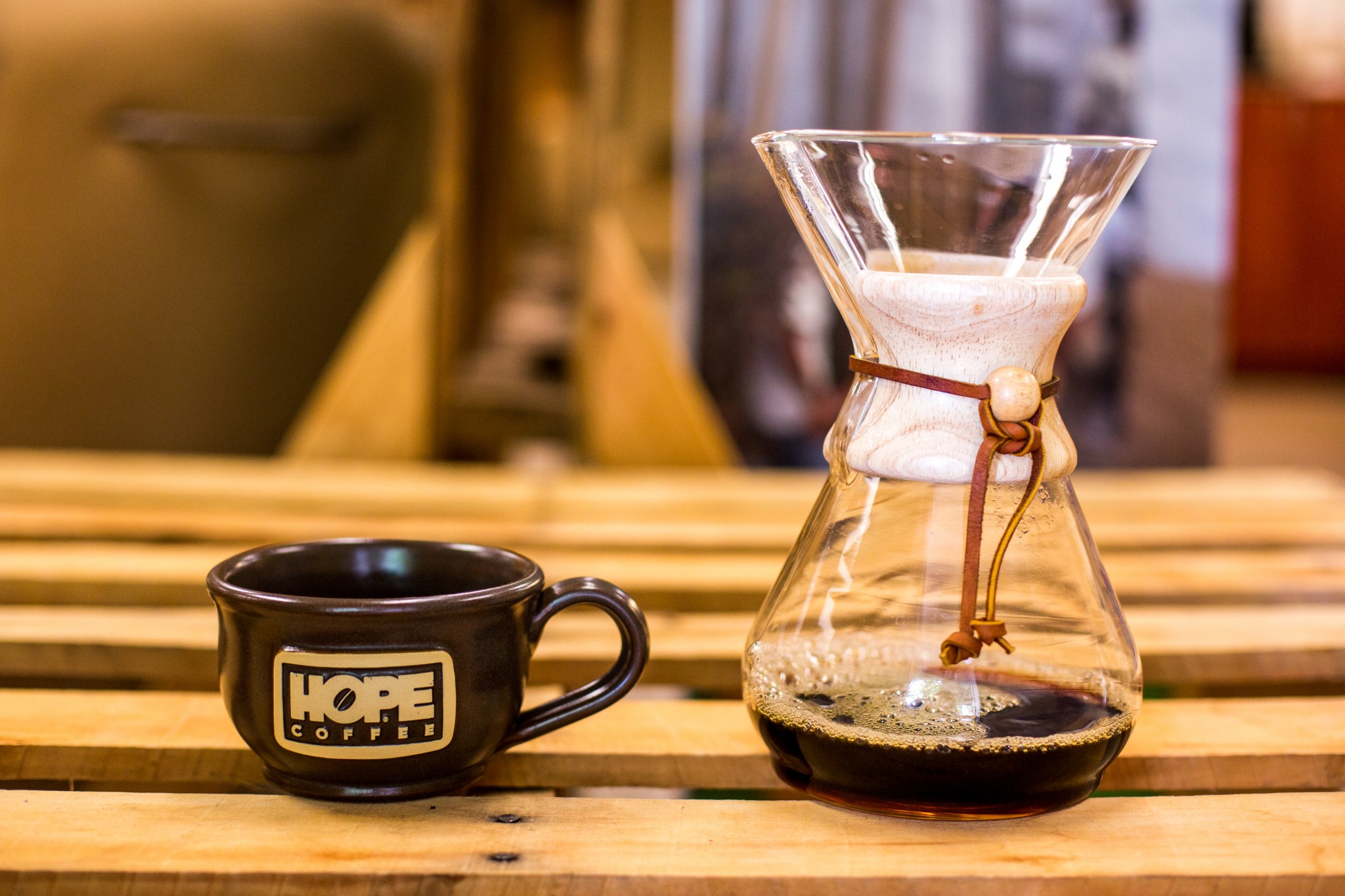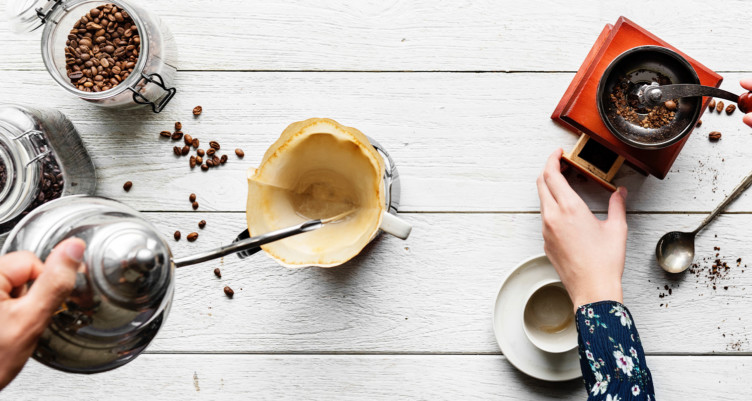Innovative Coffee Brewing Methods to Raise Your Morning Habit
Innovative Coffee Brewing Methods to Raise Your Morning Habit
Blog Article
The Scientific Research Behind Coffee Brewing: Exactly How Temperature Level and Time Affect Your Beverage
Comprehending the science behind coffee developing discloses that temperature and time are not mere variables but critical aspects that determine the beverage's flavor account and total high quality. As we explore the subtleties of these elements, the question emerges: exactly how can one successfully equilibrium temperature and time to accomplish that best mixture?
The Chemistry of Coffee Extraction
The chemistry of coffee removal looks into the complex processes that change raw coffee beans right into the fragrant drink taken pleasure in worldwide. This improvement mainly involves the solubility of numerous substances existing in the beans, which are affected by aspects such as work dimension, water high quality, and the brewing method employed.
Throughout the developing procedure, warm water acts as a solvent, drawing out soluble substances, including high levels of caffeine, acids, sugars, and lipids, from the coffee premises. Each substance adds to the taste account, aroma, and body of the last drink. Acids are responsible for brilliant and tangy notes, while oils add to an abundant mouthfeel.
The removal procedure is not consistent; different substances liquify at various rates. The initial stages of brewing remove acids and sugars, causing an enjoyable acidity, while prolonged extraction can cause bitterness because of over-extraction of unwanted substances. Understanding these chemical communications is essential for enhancing brewing strategies, as the balance between extraction time and water temperature can dramatically affect the general top quality of the coffee. Eventually, understanding the chemistry of coffee extraction is key to achieving a delicious and well-shaped cup.
Suitable Brewing Temperatures
Discovering the best brewing temperature level is vital for opening the full capacity of coffee tastes and scents - coffee brewing methods. Research study indicates that the optimum variety for developing coffee lies between 195 ° F to 205 ° F(90 ° C to 96 ° C) Within this variety, the removal procedure properly liquifies the desirable soluble compounds in coffee beans, resulting in a balanced and tasty cup
Developing at reduced temperatures, such as below 195 ° F(90 ° C ), might result in under-extraction, producing a weak and acidic brew with soft flavors. Conversely, developing at temperature levels going beyond 205 ° F(96 ° C) can result in over-extraction, generating a harsh and bitter preference as a result of the extreme dissolution of unfavorable compounds, such as tannins.
Furthermore, the suitable developing temperature can differ depending on the coffee bean kind and roast level. As an example, lighter roasts commonly gain from somewhat higher temperature levels to enhance their complicated taste accounts, while darker roasts might be much better matched to lower temperature levels to mitigate bitterness.
Eventually, preserving accuracy in developing temperature levels is critical for accomplishing a harmonious equilibrium of tastes, guaranteeing that every cup of coffee supplies an enjoyable sensory experience.
Impact of Brewing Time
Developing time plays a pivotal function in establishing the taste profile and total quality of coffee. The removal process, which influences the preference, fragrance, and body of the beverage, is largely reliant on just how long the coffee premises touch with water. Shorter brewing times can lead to under-extraction, resulting in a weak or sour flavor, as not sufficient soluble substances are dissolved. On the other hand, extended brewing can cause over-extraction, where undesirable substances are released, resulting in an astringent or bitter preference.
Optimal brewing time differs depending sites on the method used and the grind dimension of the coffee. As an example, a French press generally needs concerning 4 minutes, while espresso extraction is generally finished within 25 to 30 seconds. It is vital to adjust brewing time in combination with various other variables, such as water temperature level and coffee-to-water ratio, to attain the preferred flavor account.
Understanding the impact of brewing time makes it possible for coffee fanatics to refine their developing strategies, ultimately improving the sensory experience of their mug (coffee brewing methods). With mindful attention to this variable, one can open the complete potential of the coffee, exposing its unique qualities and nuances
Brewing Techniques and Their Results

As an example, techniques like French press and chilly brew permit a much longer steeping time, causing a fuller body and durable flavor as a result of boosted removal of oils and soluble solids. Conversely, espresso brewing makes use of high stress and a shorter removal time, generating a focused shot that emphasizes extreme tastes and an abundant crema.
Pour-over strategies, such as Chemex or V60, supply a more controlled extraction process, permitting the brewer to control flow price and water circulation, which can improve illumination and clarity. At the same time, percolation approaches cycle water with the coffee premises numerous times, bring about a stronger, commonly bitter taste.
Finally, making use of paper filters versus steel filters can likewise impact the final preference; paper filters usually produce a cleaner cup by capturing oils and great fragments, while steel filters permit more oils to go through, adding to a fuller mouthfeel - coffee brewing methods. this contact form Recognizing these nuances can raise the coffee experience significantly
Tips for Developing Your Mixture
A well-executed mixture can change also the simplest coffee right into an exceptional experience. Grind the beans simply prior to brewing to make best use of freshness, making certain the grind dimension matches your developing approach-- coarser for French press and finer for coffee.
Water top quality plays a critical function; usage filtered water devoid of impurities. The optimal brewing temperature varies between 195 ° F and 205 ° F(90 ° C to 96 ° C ) As well warm can burn the coffee, while too great might under-extract flavors.
Timing is just as crucial. For immersion techniques, soaking for three to five mins is ideal, whereas drip approaches usually take about 5 minutes. Explore brew times to discover your preferred strength.

Conclusion
In recap, the complex partnership in between temperature level and time is paramount in the coffee developing procedure. Abiding by optimal brewing temperatures in between 195 ° F and 205 ° F, along with specific timing tailored to every method, makes certain the wanted taste profile is achieved. Recognizing these scientific principles equips individuals to fine-tune their brewing strategies, ultimately bring about a more pleasurable and well balanced coffee experience. Proficiency of these variables is crucial for any kind of coffee lover looking for excellence in their drink.
Recognizing the scientific research behind coffee brewing exposes that temperature and time are not mere variables however critical aspects that determine the drink's taste profile and total high quality. Recognizing these chemical communications is critical for enhancing brewing methods, as the balance in between removal time and water temperature can substantially affect the general high quality of the coffee.Brewing time plays a crucial function in figuring out the flavor account and overall top quality of coffee. By concentrating on these aspects-- bean high quality, grind dimension, water temperature, soaking time, and proportion-- you can boost your coffee brewing process, resulting in a regularly exceptional mug.
In recap, the complex relationship between temperature and time is critical in the coffee developing procedure.
Report this page